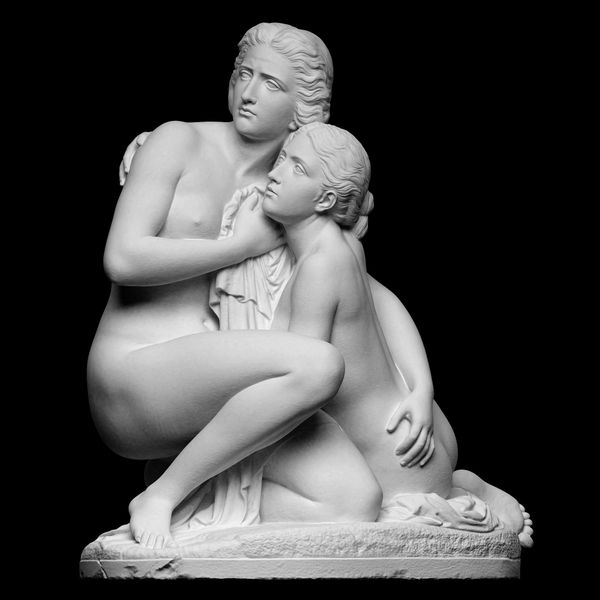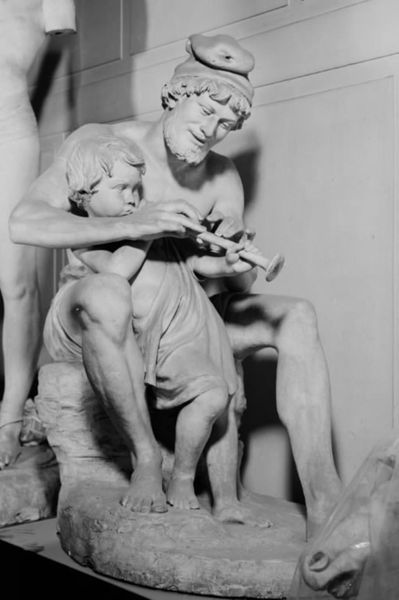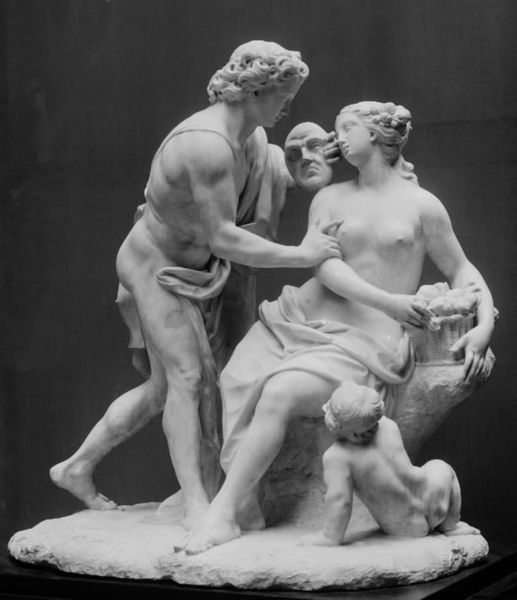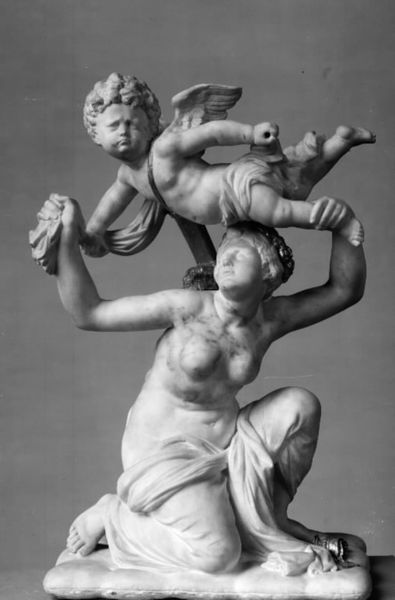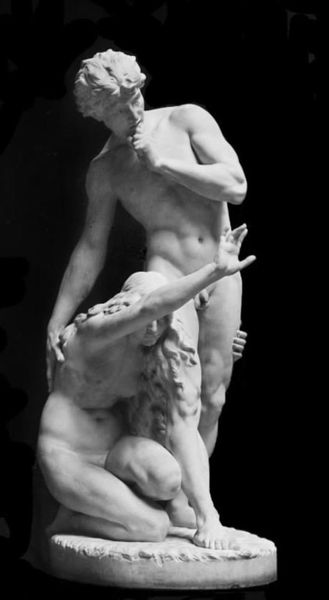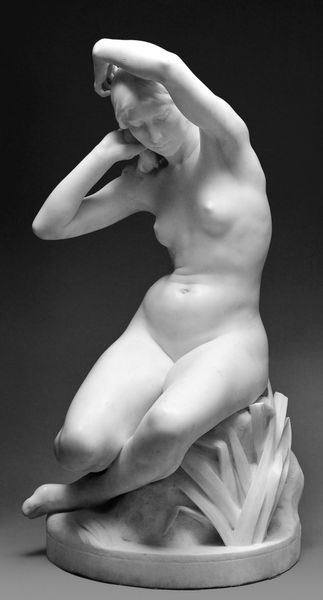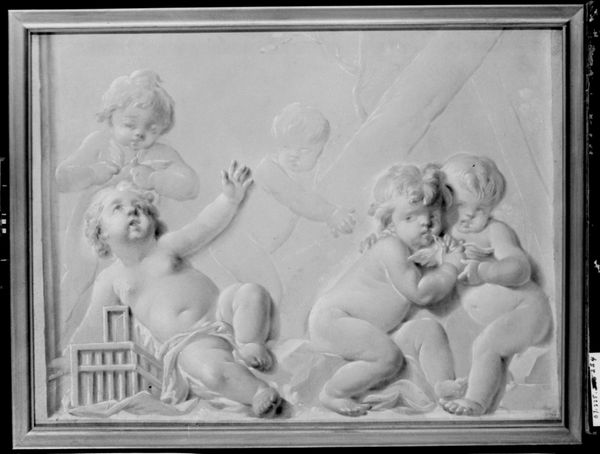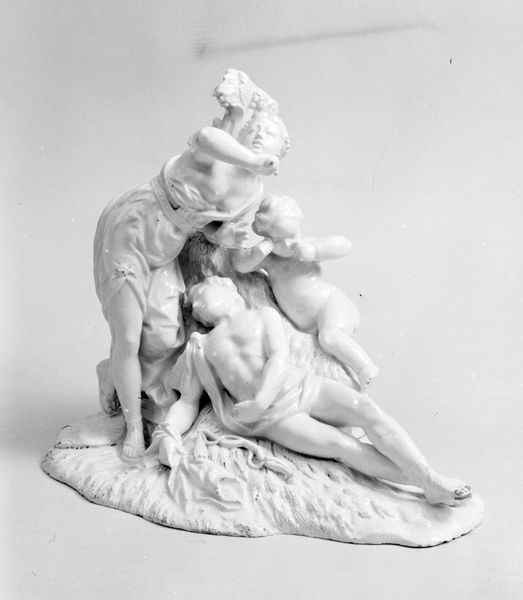
sculpture, ivory
#
baroque
#
sculpture
#
figuration
#
sculpture
#
ivory
Dimensions: 15 cm (height) x 8.3 cm (width) (Netto)
Editor: This ivory sculpture, "Bacchus and Ceres with Venus and Cupid," likely carved between 1697 and 1745, strikes me as both opulent and surprisingly intimate given the grand allegorical subject matter. What historical forces were at play that might have led to this intersection? Curator: Good observation. Considering the period, this piece emerges during the height of Baroque extravagance, where displays of wealth and power through art were commonplace. But more subtly, the use of ivory suggests a patron with very specific means and access to global trade networks. What impact do you think those connections would have had on artistic choices? Editor: It’s almost as though they were deliberately demonstrating not just wealth, but a refined taste born of broad cultural exposure? Curator: Precisely! Furthermore, the sculpture presents classical gods in a way designed to appeal to a courtly audience well-versed in mythology, but also attuned to new humanist thinking. Do you notice any details that hint at a public, didactic function? Editor: Perhaps the arrangement of figures? Venus and Cupid alongside the providers Bacchus and Ceres might visually represent the importance of pleasure and abundance under enlightened rule. Curator: Excellent point. Think about the very placement of such a piece - whether prominently displayed in a palace or set in a more private gallery - influenced how its messages about wealth, power, and ideal governance were consumed. Now, considering how tastes shifted with the Enlightenment, can you see any ways this sculpture might have been later received, maybe even critiqued? Editor: Definitely. By the time you get to the later half of the 18th century, the overt display of excess and allegorical glorification could be seen as frivolous or even politically suspect during rising revolutionary sentiments. Curator: Indeed. It speaks volumes about the role of art in both reflecting and shaping social and political attitudes across time. It's not just an object; it's a historical document embedded in complex cultural dialogues. Editor: It’s fascinating to consider this sculpture less as an isolated object of beauty and more as a touchstone for understanding broader historical trends. Curator: Exactly. By thinking about those forces, the artwork transforms from simply aesthetically pleasing to deeply meaningful.
Comments
No comments
Be the first to comment and join the conversation on the ultimate creative platform.


